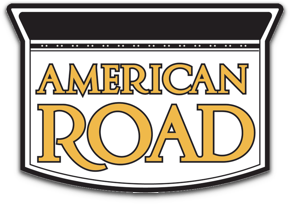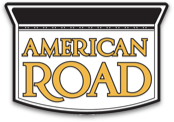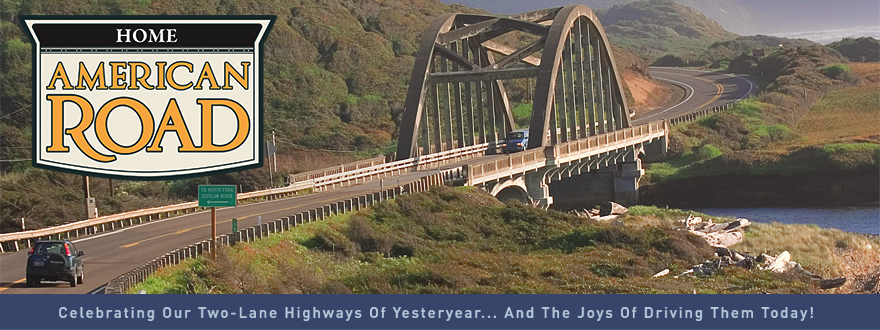
Mark G Simon
Full Members-
Posts
29 -
Joined
-
Last visited
Mark G Simon's Achievements

Day Tripper (1/6)
0
Reputation
-
Aha! Now that I've been there, I get it. This is why the white former service station at the bottom of Hixon Rd. has a sign that reads "Dead end road. No trespassing". That's where the National Road originally turned. Eighty years after this segment of road was by-passed, there are still people who would like to use it.
-
National Road Between New Market And Frederick Md.
Mark G Simon replied to mobilene's topic in National Road / U.S. 40
Sorry, I was misleading. The 2nd alignment west of the bridge is the parking lot. The 2nd bridge is covered with "No Trespassing" signs, but you can walk on it if you're daring. There are plants growing through the cracks in the concrete and there's graffiti and stuff. I believe what happened was a bus crashed on or into the bridge, or crashed into the railing or something. The accident was so bad that the structure was declared unstable and unsafe to drive over. So they built yet another bridge, and for some reason kept the second bridge standing. -
National Road Between New Market And Frederick Md.
Mark G Simon replied to mobilene's topic in National Road / U.S. 40
I find the area west of the Jug Bridge fascinating because there are three separate alignments of the road lying side by side. There's the old alignment, on which can be found the original toll house for the Jug Bridge, which is being lived in (behind "Do Not Trespass" signs) and other old houses such as this one: This quickly peters out into the parking lot of a mobile home dealer. Then there's the 2nd alignment, attached to the unused 2nd bridge, which is now used as a parking lot for a park and ride service, and then the present alignment. -
National Road Between New Market And Frederick Md.
Mark G Simon replied to mobilene's topic in National Road / U.S. 40
The roundabout in Lisbon seems to be pretty new. I saw it for the first time in April and the work looks pretty fresh. I'd attach a picture if I hadn't used up my quota. MD 144 becomes 4 lane at the place where it crosses I-70 just east of Bartonsville, and this has been the case for as long as I can remember. One might say 6-lane, since there is an old alignment that runs parallel to this almost up to the Monocacy River, where it would have taken a jag to the north across the current alignments (there are 2 others at this point) to become Dr. Baxter Rd. and cross the river over the Jug Bridge. The other alignment took the 2nd bridge over the Monocacy, which is still standing, though closed to traffic. During the colder months, one can walk on this bridge and get a glimpse through the leafless trees of what foundations remain of the Jug Bridge on the western bank. -
Two New Vintage Images Of Sideling Hill
Mark G Simon replied to Steve_Colby's topic in National Road / U.S. 40
Was this the Cities Service station that the sign partway up the hill was advertising? Or was that Hixon's Feed? I'm a little mixed up about which way the sign was pointing. I'm just assuming that a sign placed on the right side of the road (looking downhill) would be aimed at the traffic going downhill. Or maybe the sign was assuring motorists that a Cities Service station was a few miles ahead and that drivers could confidently bypass the two stations on the west side of Sideling Hill. -
Two New Vintage Images Of Sideling Hill
Mark G Simon replied to Steve_Colby's topic in National Road / U.S. 40
Just this past weekend I visited Sideling Hill and saw for myself the Hixon Rd. alignment, enjoying in person the sites I had so far only seen here. I was inspecting the fruit cider stand at the top of the hill when someone drove up and informed me that there was a black bear on the road about half-way down the hill. I found that all the more reason to explore Hixon Rd. At the bottom of Hixon Rd., right where it crosses McFarlane Rd., there is a row of old tourist cabins. The driver of a passing pick-up truck confirmed for me that's what it was. -
Random Rant - Brownsville, Pa Is Haunting Me...
Mark G Simon replied to Steve_Colby's topic in National Road / U.S. 40
http://lcweb2.loc.gov/pnp/habshaer/pa/pa1400/pa1412/sheet/00001r.tif According to this document, alterations to the bridge, including replacement of the original railings, were done in 1922. -
Random Rant - Brownsville, Pa Is Haunting Me...
Mark G Simon replied to Steve_Colby's topic in National Road / U.S. 40
Steve, Clearly the railing is not the original railing, but one which replaced the original railing some time in the 19th or early 20th century, but the railing is attached to the original bridge. The point is, in your top picture, the camera is pointed parallel to the bridge, at roughly a 90 degree angle to the viewpoint of the lower picture. If you wanted to make a "deja-view" shot to the lower picture, you probably couldn't do it today, because there have been too many other structures put in the way since then, including another bridge carrying another street across the creek, which wasn't there in 1839, but if you were able to do it, you would be standing in the creek itself looking west, whereas your picture is taken from the south bank of the creek looking north. The Library of Congress has some good shots of the Dunlap Creek Bridge. Frank Brusca had one of them in his old US 40 website. http://lcweb2.loc.gov/cgi-bin/ampage?collId=pphhphoto&fileName=pa/pa1400/pa1412/photos/browse.db&action=browse&recNum=0&title2=Dunlap%27s%20Creek%20Bridge,%20Spanning%20Dunlap%27s%20Creek,%20Brownsville,%20Fayette,%20PA&displayType=1 The first of these shots (numbered HAER,PA,26-BROVI,2-1 ) is the closest you'll get to a deja-view of your lower picture. The picture gives a vivid illustration of one important fact about Brownsville: it occupies a narrow valley between the hills and the river and so space in the commercial district was at a premium. You can see, even in your postcard view, that structures are being built out over the water on the western side of the bridge. In HAER,PA,26-BROVI,2-1, you can see that foundations have been put up in the creek itself and buildings have been erected directly upon both sides of the bridge. The bridge itself was in danger of being swallowed up by the building boom of the early 20th century. HAER,PA,26-BROVI,2-2 gives a closer view, and you can see the building in the foreground was a florist shop, with the FTD logo on the side. The concrete slab in your picture is all that remains of that building. It existed as late as 2004, the first time I passed through Brownsville, but four years later it was gone. The other pictures in that group on the Library of Congress Historic American Engineering Record site show the underside of the bridge, demonstrating how the modern roadway was literally clamped on top of the original bridge. -
Random Rant - Brownsville, Pa Is Haunting Me...
Mark G Simon replied to Steve_Colby's topic in National Road / U.S. 40
Steve, The railing of the original iron bridge is visible in your picture as a shadow. What you're looking at here is the foundation of the building that they had knocked down in 2008 that jutted out over Dunlap Creek. -
Random Rant - Brownsville, Pa Is Haunting Me...
Mark G Simon replied to Steve_Colby's topic in National Road / U.S. 40
Brownsville is kind of a sad place, like a ghost town, but I found it haunting just the same. I couldn't believe my eyes the first time I drove through it and saw a freight train rolling right down the middle of a residential street past a gold-domed church. On another trip there, I stopped and took some pictures Nemacolin's Castle, which is a really fascinating building with some gothic features, such as a turret. There are a number of elegant old homes along Front St., including the home of Philander Knox, with a plaque explaining who he was. While I was nosing around, shooting pictures, a man came up to me and struck up a conversation. He proceeded to give me a history of every house on Front St., when it was built, who lived in it, etc. If I'd had a recording device I could have learned something. As Front St. passes Nemacolin's Castle it descends sharply, with the original brick paving meeting a stone retaining wall on the Nemacolin's Castle property. There are some very picturesque views of the castle to be had from here, and if the road were still open to traffic, it would lead down to the Flatiron Building and the rest of the (former) business district. Now they seem to be in the process of knocking down the old abandoned store fronts. In 2008 they had already torn down the store next to the Dunlap Creek Bridge, which had actually jutted out over the creek bed, obscuring half of the bridge itself. -
Deja-view: Sideling Hill Creek, West Of Hancock, Md
Mark G Simon replied to Steve_Colby's topic in National Road / U.S. 40
I think the concrete shoulders make the old road look narrower. In the modern road you can't distinguish the road surface from the shoulder, so it all looks wider, especially as it recedes. -
On page 51 of Robert Bruce's The National Road (1916) is a picture captioned "Looking down the western slope of Little Savage Mountain, across Red Bridge to Meadow Mountain (in the extreme distance)". The text adds "On the right, immediately beyond Little Savage, is the farm of Thomas Johnson, a descendant of the first state governor of Maryland; his house is at the fifteenth mile-post west of Cumberland or the fourth beyond Frostburg. Nearly opposite, but a trifle farther west, are Mr. Johnson's spacious barns". In 1950, when George Stewart took his picture of the same spot, which appears as no. 15 in U.S. 40, the scene had by his own admission changed very little. "It shows no change in the alignment of the road at all, and very few changes of any kind. Even the fence in the foreground with its out-of-line posts and old sagging wire is apparently the same", though he might have noted that the telephone poles had been relocated to the other side of the road. Stewart states that "At present the farm, like so many in the eastern countryside, has a city owner. It is given over to stock-raising, chiefly to horses." Thirty years later Thomas and Geraldine Vale found this spot criss-crossed and split up with highways, as it is today. They noted the already deteriorating condition of the house but observed that "the strips of corn and fallow on the hillslope, carefully arranged on the contour, indicate that the farm is not abandoned, although it certainly is not 'given over to stock-raising, chiefly horses', as it was in Stewart's time". It may be that the occupants of the house at the time the Vales passed through was the same in the picture of this house in 1970 that Steve Colby shows on his web site http://www.cumberlandroadproject.com/maryland/garrett/garrett-photo-pages/big-savage-mtn-photos1.html Steve identifies this house as "tenant house B, Chase farm". Where did that information come from, Steve? This is one property I wish could be preserved somehow, but given its present condition I fear that is too late. I would be interested to know the history of this farm, who owned it when, and when did it change hands, and when was it abandoned for good. The connection with the first governor of Maryland gives this property some historic interest.
-
The pictures of the Two Mile Run accident suggest a literal meaning for the name "Shades of Death". Maybe accidents of this kind were frequent at this spot. In the second of the 1965 accident pictures, it looks like the old tavern stand you show in another picture is in the background. Isn't that the same building?


